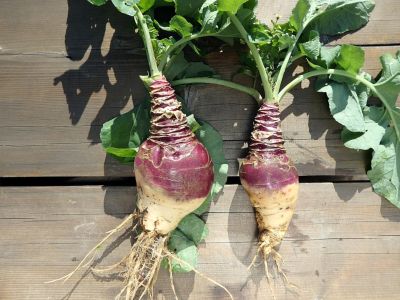How to Grow Rutabaga
Remember that these plants are not much different from turnips. The difference is that the roots are larger, firmer, and rounder than turnip roots and the leaves on the rutabaga are smoother. When planting rutabaga, plant about 100 days before the first frost in late fall. Prepare your soil as you would when growing any vegetable, rake the soil and remove any debris and rocks.
Planting Rutabaga
When planting rutabaga, throw the seed down in the prepared soil and rake it in lightly. Plant the seeds at a rate of three to twenty seeds per row and rake them about half an inch (1 cm.) deep. Allow enough room to put one or two feet (31-61 cm.) between rows. This allows space for the roots to plump up and form rutabagas. If the soil isn’t moist, water the seeds to germinate them and establish healthy seedlings. Once seedlings appear and are about 2 inches (5 cm.) tall, you can thin them to about 6 inches (15 cm.) apart. One of the great things about planting rutabaga and turnips is that when you thin the plants, you can actually eat the thinned leaves as greens. This is true for both rutabagas and turnips. Cultivate between the plants that are left to a depth of 2 to 3 inches (5-8 cm.) deep. This helps aerate the soil and gets rid of weeds. Also, it loosens the soil around the root of the growing rutabagas allowing for larger root growth. Since rutabagas are a root vegetable, you want the dirt to be firm around the bottom of the leaves but looser underneath so the root is not stopped in growth.
Harvesting Rutabagas
When harvesting rutabagas, pick them when they are tender and mild. Growing rutabagas are ready for harvest when they are about medium sized. Harvesting rutabagas when they are about 3 to 5 inches (8-13 cm.) in diameter will yield the best quality rutabagas. Be sure the rutabagas you harvest have grown without any interruptions in the growing season.
